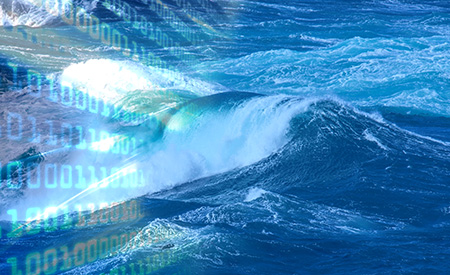/H2020/DTOCEANPLUS
Type of resources
Available actions
Topics
Keywords
Contact for the resource
Provided by
Formats
status
-

This document includes the main requirements, use cases, as well as implementation details and is completed with some examples; it can serve as a technical manual of the catalogues module. This document describes the functionalities and the technical aspects of the code implemented to meet them. The catalogues module will provide users with a single source of reference data that can be managed and used in other modules or tools of the DTOcean+ suite to ease inputs during different phase of a project.
-

The objective of Task 4.3 was to carry out the testing of the Stage Gate design tool in order to verify that it meets all the previously defined requirements (in WP2 and T4.1). This report documents the outcome of T4.3 “Verification of the Stage Gate design tool.”
-

This document is the third annual report on dissemination and communication activities regarding DTOceanPlus project.
-

A coherent set of functional and technical requirements have been developed for the DTOcean+ suite of design tools based on analysis of gaps between the current state-of-the-art tools, learning from the original DTOcean project, and the stakeholder expectations identified in the user consultation survey. The technical requirements in this document are translated from the general requirements for the software suite of tools, and specific requirements (functional, operational, user, interfacing, and data) for the assessment tools that will be developed as part of this project.
-

The objective of the DTOceanPlus project was to develop a software suite of open source advanced tools for the selection, development and deployment of ocean energy systems. DTOceanPlus project made it to develop and demonstrate an open source sotftware suite of second generation design tools for ocean energy technologies including sub-systems, energy capture devices and arrays. These tools support the entire technology innovation process, from concept, through development, to deployment. More broadly, the project also provided an industry standard for communicating technology descriptions throughout the sector. To complement the numerical work, an extensive market analysis of the ocean energy sector is publicly available.
-

This report provides a critical evaluation of the ocean energy sector’s legal, institutional, and political frameworks with an identification and analysis of barriers and enabling factors for the deployment of ocean energy.
-

This document presents the first step in achieving DTOceanPlus project website’s launching.
-

This document is an update of the first version of the data management plan. This version describes in more detail the practical data management procedures implemented by the DTOceanPlus project.
-

Cost reductions in nascent forms of Renewable Energy Technology (RET) are essential for them to contribute to the energy mix. Policy intervention can facilitate this cost reduction; however, this may require a significant investment from the public sector. These cost reductions fall into two broad categories: (1) incremental cost reductions through continual improvements to existing technologies, and (2) radical innovation where technologies that significantly differ from the incumbents are developed. This study presents a modelling methodology to integrate radical innovation in RET experience curve and learning investment analysis, using wave energy as an example nascent RET. This aims to quantify the potential effects of radical innovation on the learning investment, allowing the value of successful innovation to be better analysed. The study highlights the value offered by radical innovations in long-term deployment scenarios for wave energy. This suggests that high-risk R&D efforts in nascent RET sectors, even with low success rates, could still present significant expected value in offsetting future revenue support.
-

The aim of this document is to present the activity carried out by the three industrial partners who validated the DTOcean+ suite against five tidal energy validation scenarios.
 Catalogue PIGMA
Catalogue PIGMA